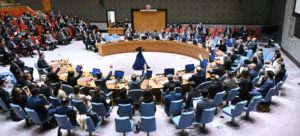The Seismic Shockwave: Myanmar’s Earthquake and its Regional Impact
A powerful 7.7 magnitude earthquake originating in Myanmar has sent shockwaves across the region, most notably causing significant tremors and widespread evacuations in Bangkok, Thailand. This seismic event has triggered immediate concern and prompted international attention due to its scale and the potential for widespread damage and displacement. The earthquake serves as a stark reminder of the region’s vulnerability to natural disasters and the interconnectedness of nations in the face of such events.

The Earthquake’s Epicenter and Immediate Effects
The earthquake’s epicenter, located within Myanmar, released a tremendous amount of energy, resulting in ground shaking felt hundreds of kilometers away. The intensity of the tremors in Bangkok, a densely populated metropolis, necessitated swift evacuations of high-rise buildings and public spaces. The immediate aftermath was characterized by heightened anxiety and a rush to assess potential structural damage. The rapid transmission of seismic waves highlights the geological instability of the region and the potential for far-reaching consequences from even seemingly distant epicenters. The sheer magnitude of the quake has put regional disaster response systems on high alert.
International Attention and Humanitarian Concerns
The substantial reach of the earthquake’s effects has drawn significant international attention. News outlets worldwide have reported on the event, and humanitarian organizations are monitoring the situation closely. The potential for damage in Myanmar, where infrastructure may be less robust, is a primary concern. The possibility of landslides, building collapses, and widespread displacement looms large. The international community is preparing to offer assistance, with a focus on providing emergency aid and supporting long-term recovery efforts. The cross border impacts of the earthquake increase the level of concern, and the need for international cooperation.
Regional Vulnerability and Preparedness
This earthquake underscores the region’s susceptibility to seismic activity. Southeast Asia sits on a complex network of tectonic plates, making it prone to earthquakes and volcanic eruptions. The event serves as a critical reminder for governments and communities to prioritize disaster preparedness. Building codes, early warning systems, and public education initiatives are essential for mitigating the impact of future earthquakes. The need for coordinated regional disaster response plans has become more urgent, as the interconnected nature of the region means that a disaster in one country can have cascading effects on its neighbors. The international community is likely to increase its focus on supporting regional disaster preparedness and response efforts.




















